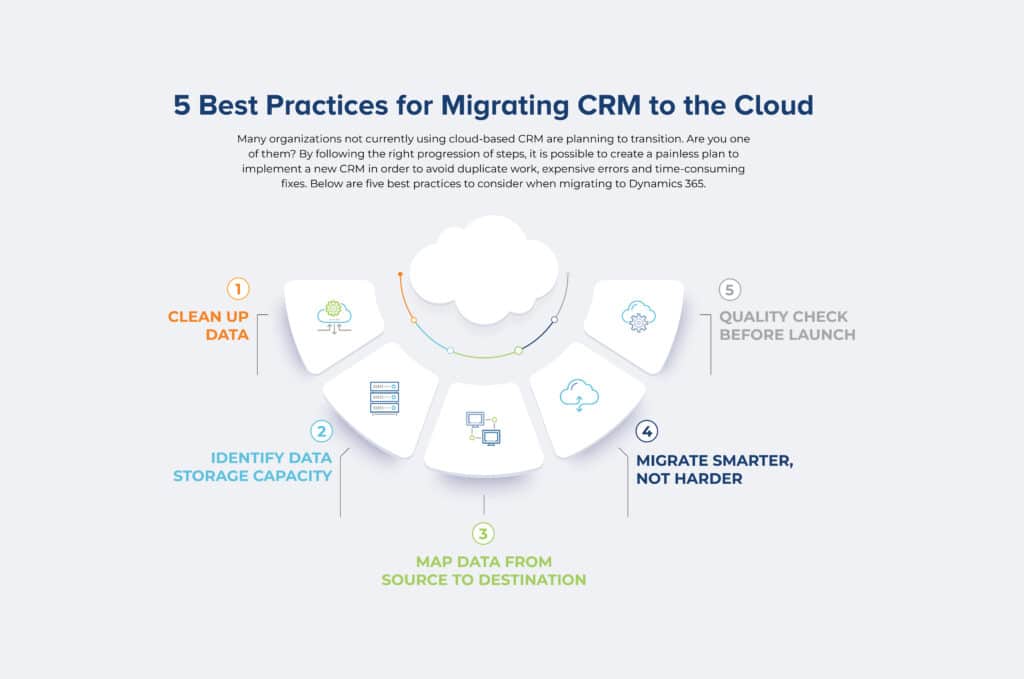Implementing Microsoft Dynamics 365 is a transformative journey for any organization, streamlining processes and enhancing efficiency. A critical component of this implementation is data migration, which, if not handled properly, can lead to significant disruptions and setbacks. Here, we outline the best practices for data migration in a Microsoft Dynamics 365 implementation, emphasizing the importance of careful planning, execution, and the strategic use of technologies like Microsoft Azure Remote Desktop Services. Additionally, we will touch upon the prestigious Microsoft Business Applications Inner Circle Award, which signifies excellence in this field.
1. Planning and Assessment
Thorough Data Assessment
Before embarking on data migration, conduct a comprehensive assessment of your existing data. This involves identifying data sources, evaluating data quality, and determining the relevance of each data set. This step is crucial in understanding the scope of the migration and in identifying potential challenges.
Clear Objectives and Scope Definition
Define the objectives and scope of the data migration clearly. Determine what data needs to be migrated, the desired outcome, and the timeline. Having well-defined objectives helps in maintaining focus and ensures alignment with business goals.
Stakeholder Engagement
Engage stakeholders early in the process. This includes IT teams, data owners, and end-users. Their input is invaluable in understanding data usage patterns, critical data elements, and potential issues that may arise during migration.
2. Data Cleaning and Preparation
Data Quality Improvement
Prior to migration, clean the data to remove duplicates, errors, and inconsistencies. High-quality data is essential for the successful operation of Microsoft Dynamics 365. Use data profiling tools to analyze data quality and apply data cleansing techniques to rectify issues.
Data Mapping
Map existing data fields to the corresponding fields in Microsoft Dynamics 365. This step ensures that data is transferred accurately and aligns with the new system’s structure. Data mapping should be documented thoroughly to serve as a reference during the migration process.
3. Choosing the Right Tools and Technologies
Leveraging Microsoft Azure Remote Desktop Services
Microsoft Azure Remote Desktop Services can facilitate a secure and efficient data migration process. It enables remote access to legacy systems, allowing for seamless extraction and transformation of data. Azure’s robust infrastructure ensures data security and minimizes downtime during migration.
Utilizing Data Migration Tools
Employ specialized data migration tools that are compatible with Microsoft Dynamics 365. Tools like the Microsoft Data Migration Framework (DMF) provide predefined templates and processes that streamline the migration effort. These tools also offer functionalities for data validation, ensuring that the migrated data meets the required standards.
4. Execution of Data Migration
Pilot Testing
Before a full-scale migration, conduct a pilot test with a subset of data. This helps in identifying potential issues and allows for adjustments to be made without impacting the entire dataset. Pilot testing acts as a rehearsal, ensuring that the actual migration proceeds smoothly.
Phased Approach
Implement the data migration in phases rather than a single, large-scale operation. This phased approach reduces risk, allows for incremental validation, and makes it easier to manage issues as they arise. Each phase should be thoroughly tested and validated before proceeding to the next.
Data Validation and Reconciliation
After each phase of migration, validate the data to ensure it has been transferred accurately and completely. Reconcile the migrated data with the original source to confirm integrity and completeness. This step is crucial in maintaining data accuracy and reliability.
5. Post-Migration Activities
User Training and Support
Once the data migration is complete, provide comprehensive training to end-users. This training should cover new data structures, processes, and any changes in workflows. Adequate support should be available to address any issues that users may encounter post-migration.
Monitoring and Optimization
Continuously monitor the performance of the new system to identify and resolve any issues that arise. Optimization of data structures and processes may be necessary to ensure the system operates at peak efficiency. Regular audits and feedback loops help in maintaining data quality over time.
6. Compliance and Security
Ensuring Data Compliance
Compliance with data protection regulations is paramount during data migration. Ensure that all data handling practices adhere to relevant laws and regulations, such as GDPR or CCPA. This includes secure data transfer methods and proper documentation of the migration process.
Data Security Measures
Implement robust security measures to protect data during migration. Utilize encryption, secure access protocols, and audit trails to safeguard sensitive information. Microsoft Azure’s security features provide a strong foundation for protecting data in transit and at rest.
7. Learning from the Best: Microsoft Business Applications Inner Circle Award
The Microsoft Business Applications Inner Circle Award is given to top-performing Microsoft partners who have demonstrated excellence in delivering innovative solutions and exceptional client satisfaction. Learning from the methodologies and practices of these award-winning organizations can provide valuable insights into successful data migration.
Emulating Excellence
Award recipients often exemplify best practices in data migration, including meticulous planning, execution, and leveraging advanced technologies. Studying their approaches can offer practical strategies and inspire continuous improvement in your own data migration projects.
Conclusion
Data migration in a Microsoft Dynamics 365 implementation is a complex but crucial process that requires careful planning, execution, and continuous monitoring. By adhering to best practices such as thorough data assessment, leveraging Microsoft Azure Remote Desktop Services, conducting pilot tests, and learning from industry leaders like those recognized by the Microsoft Business Applications Inner Circle Award, organizations can ensure a smooth and successful transition. This not only enhances the efficiency and reliability of the new system but also sets a strong foundation for future growth and innovation.






Be First to Comment